บทความ
โทเคน TIA จาก Celestia อีกหนึ่งเครือข่ายที่ช่วยแก้ Blockchain Trilemma
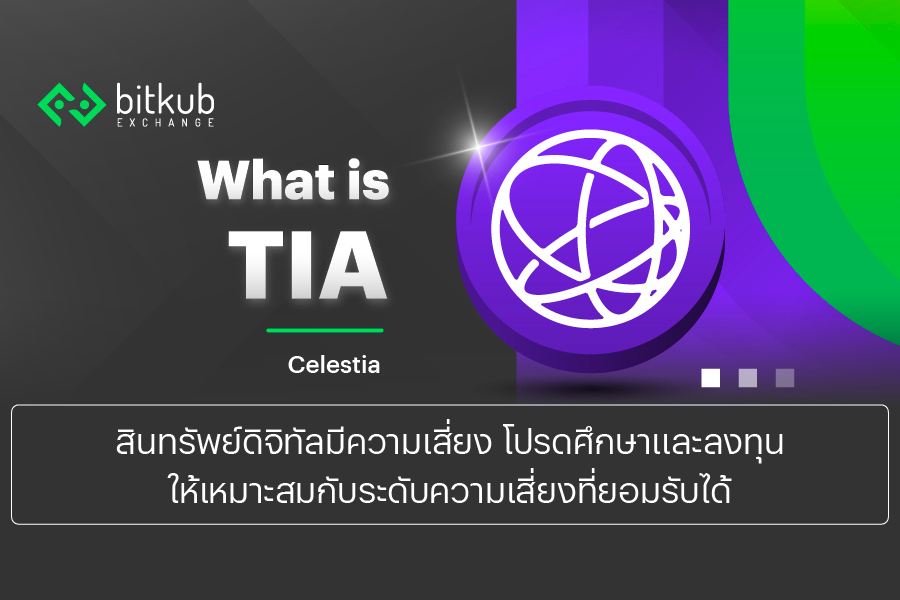
เป็นที่ทราบกันดีในวงการบล็อกเชนว่า Blockchain Trilemma เป็นสิ่งที่กลืนไม่เข้าคายไม่ออก 3 ประการที่บล็อกเชนเครือข่ายหนึ่งต้องเผชิญ และทำให้ไม่สามารถมีคุณสมบัติที่ดีเลิศทั้ง 3 อย่างได้พร้อมกัน อย่างที่ Vitalik Buterin เคยกล่าวไว้ว่าต้องมีแลกกัน (Trade-off) ระหว่างสามแง่มุมสำคัญของเทคโนโลยีบล็อกเชนนี้ที่ประกอบไปด้วย ความปลอดภัย ความสามารถในการขยายขนาด และการกระจายอำนาจ เพราะหากมีการเสริมด้านหนึ่งมักจะส่งผลให้ด้านอื่นลดน้อยลง สิ่งนี้ทำให้เกิดสถานการณ์ที่ยากลำบากสำหรับนักพัฒนาที่มักจะต้องเสียสละด้านหนึ่งเพื่อปรับปรุงอีกสองด้าน และนี่จึงเป็นที่มาของการสร้างบล็อกเชนแบบแยกส่วนของ Celestia เครือข่ายที่ปรับสถาปัตยกรรมบล็อกเชนใหม่ เพื่อปลดล็อกปัญหาเดิมที่เคยเจอ
เครือข่าย Celestia คืออะไร?
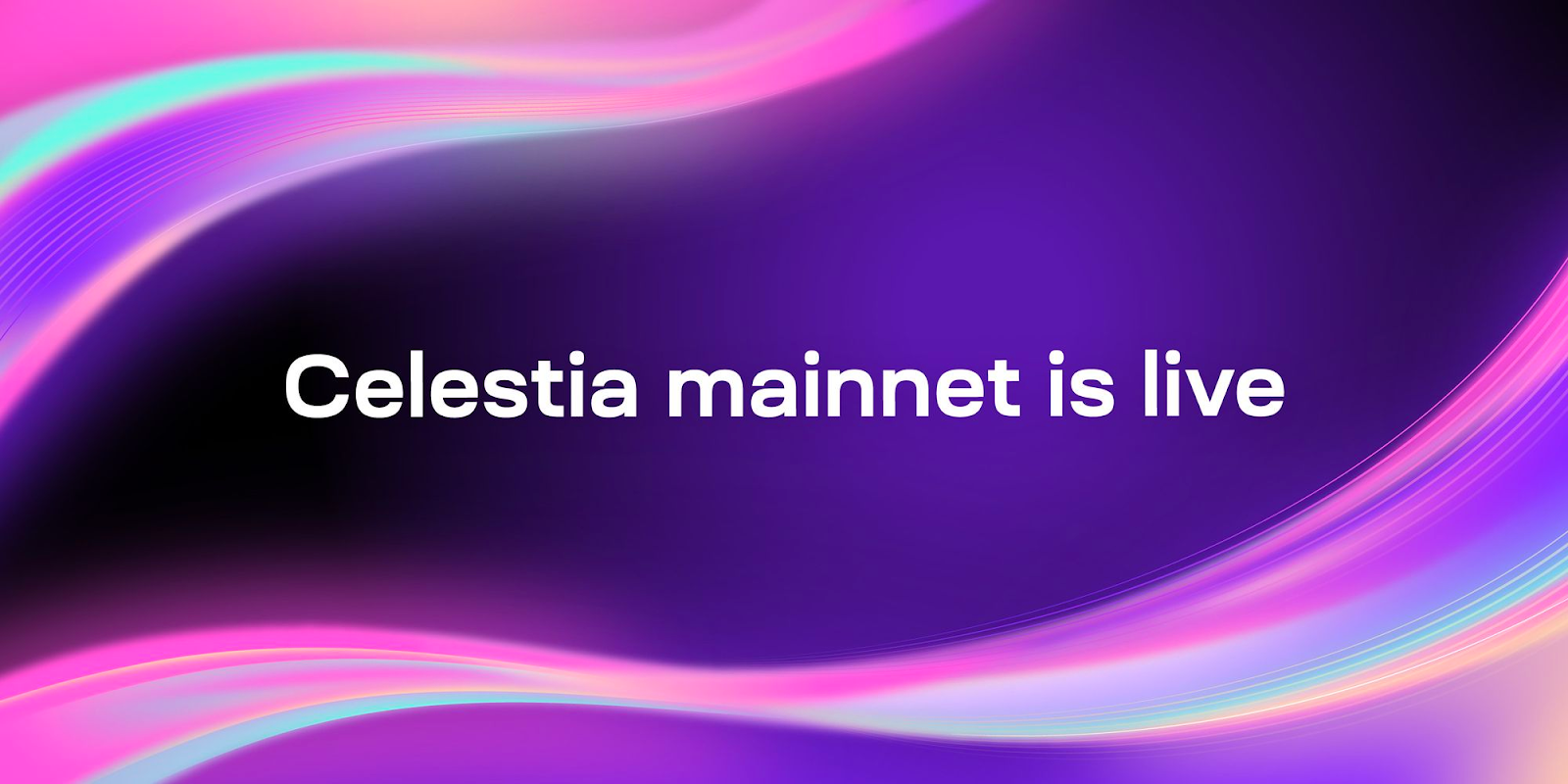
Celestia ได้รับการพูดถึงว่าเป็นเครือข่ายบล็อกเชนแบบ Modular Blockchain ที่พร้อมใช้งานข้อมูลเครือข่ายแรกของโลก เปิดตัวบน Celestia Mainnet เมื่อวันที่ 31 ตุลาคม 2566 โครงการ Celestia นี้ได้สนับสนุนแนวคิดของโมดูลาร์บล็อกเชน ซึ่งเป็นแนวคิดการออกแบบบล็อกเชนที่แยกฟังก์ชันพื้นฐานอย่างที่บล็อกเชนเคยเป็น
ทำความรู้จัก Modular Blockchain
Modular Blockchain เป็นแนวคิดการออกแบบบล็อกเชนที่แยกฟังก์ชันที่สำคัญ ต่างจากบล็อกเชนของสกุลเงินดิจิทัลในยุคแรก ๆ อย่าง Monolithic blockchains เช่น Bitcoin หรือ Ethereum ที่ฟังก์ชันทั้งหมดมีความสัมพันธ์กันไม่ว่าจะเป็น ความพร้อมใช้งานของข้อมูล ระบบฉันทามติ การดำเนินการและกิจกรรมต่าง ๆ
เราต่างยอมรับว่า Monolithic นั้นเป็นก้าวแรกที่ยิ่งใหญ่ที่แสดงให้เห็นว่านักพัฒนาสามารถสร้างแอปพลิเคชันใหม่ได้ทุกประเภทโดยใช้บล็อกเชน แต่เมื่อมีผู้คนเริ่มสร้างและใช้งานแอปมากขึ้นก็ประสบปัญหาบางประการ เช่น
-พื้นที่จำกัด ไม่สามารถสร้างสิ่งที่ต้องการ เนื่องจากจำเป็นต้องแชร์พื้นที่กับผู้อื่น และทำให้กับแอปนั้นถูกจำกัดความสามารถไป
-ราคาสูง แอปมีราคาที่ต้องจ่ายสูงขึ้นเพราะค่าธรรมเนียมที่สูงมาก ส่งผลให้แอปไม่สามารถจ่ายได้
-การเข้าถึง ที่ไม่ได้เปิดกว้างสำหรับทุกคน การเพิ่มขีดความสามารถทำให้มีคนจำนวนน้อยที่สามารถตรวจสอบการทำงานเครือข่าย
อีกทั้งปัญหาอีกหลายประการที่ทำให้บล็อกเชนแบบ Monolithic เกิดข้อจำกัดด้านการใช้งาน ทำให้ในช่วงไม่กี่ปีที่ผ่านมาได้มีแนวทางใหม่ในการสร้างบล็อกเชนเกิดขึ้น จึงกลายมาเป็น Modular Blockchain บล็อกเชนแบบแยกส่วนที่ทำงานตรงกันข้ามกับ Monolithic Blockchain
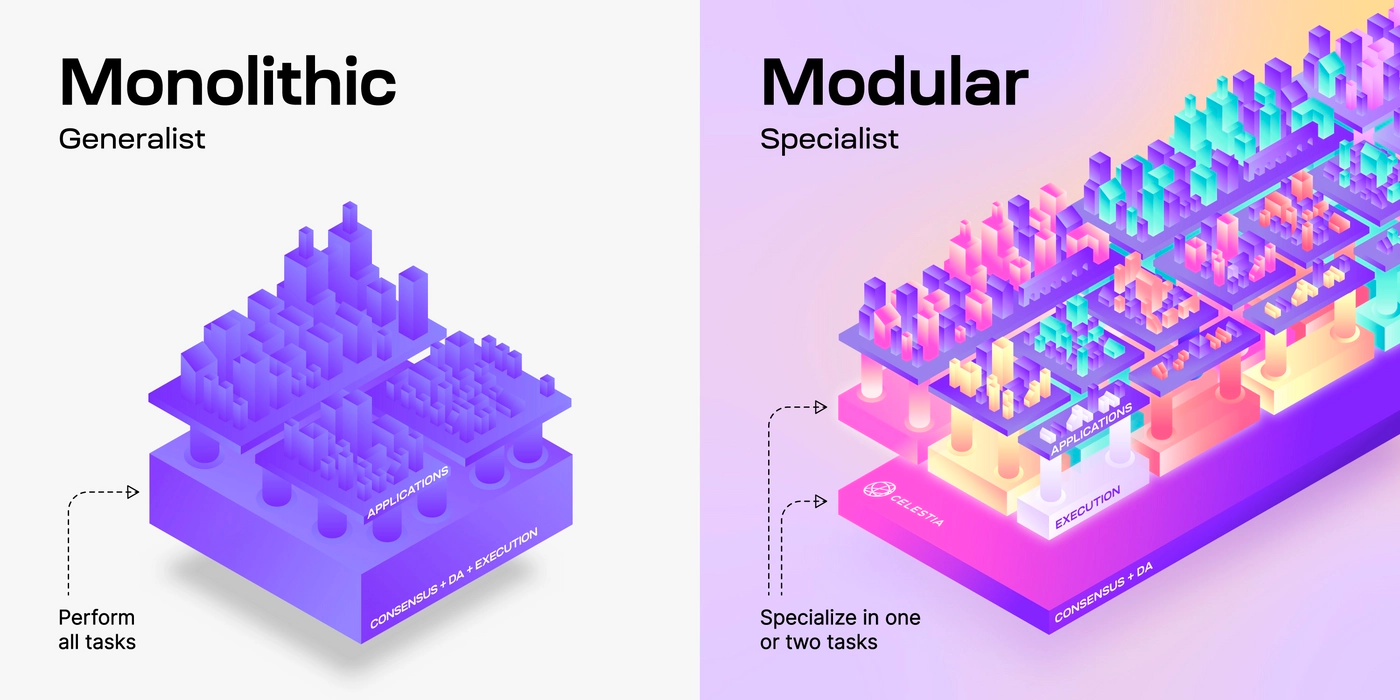
หากลองนึกถึงชิ้นส่วนของตัวต่อที่คุณสามารถผสมและจับคู่กันเพื่อสร้างโครงสร้างที่แตกต่างกันได้อย่างตามต้องการ คุณสามารถผสมและจับคู่บล็อกเชนแบบโมดูลาร์เพื่อสร้างสแต็กแบบโมดูลาร์ที่แตกต่างได้เช่นกัน
Modular blockchain ทำให้ Celestia มีข้อจำกัดน้อยลงมากเกี่ยวกับวิธีการสร้างแอปพลิเคชันและบล็อกเชนแบบโมดูลาร์ พื้นที่การออกแบบที่กว้างขวางประกอบด้วยทุกสิ่งตั้งแต่เครื่องเสมือนใหม่ไปจนถึงโมเดลความเป็นส่วนตัวที่เป็นเอกลักษณ์และสถาปัตยกรรมบล็อกเชนประเภทใหม่ ตอบโจทย์นักพัฒนาที่สามารถสร้างอะไรก็ได้ตามต้องการ
ผู้สร้าง Celestia
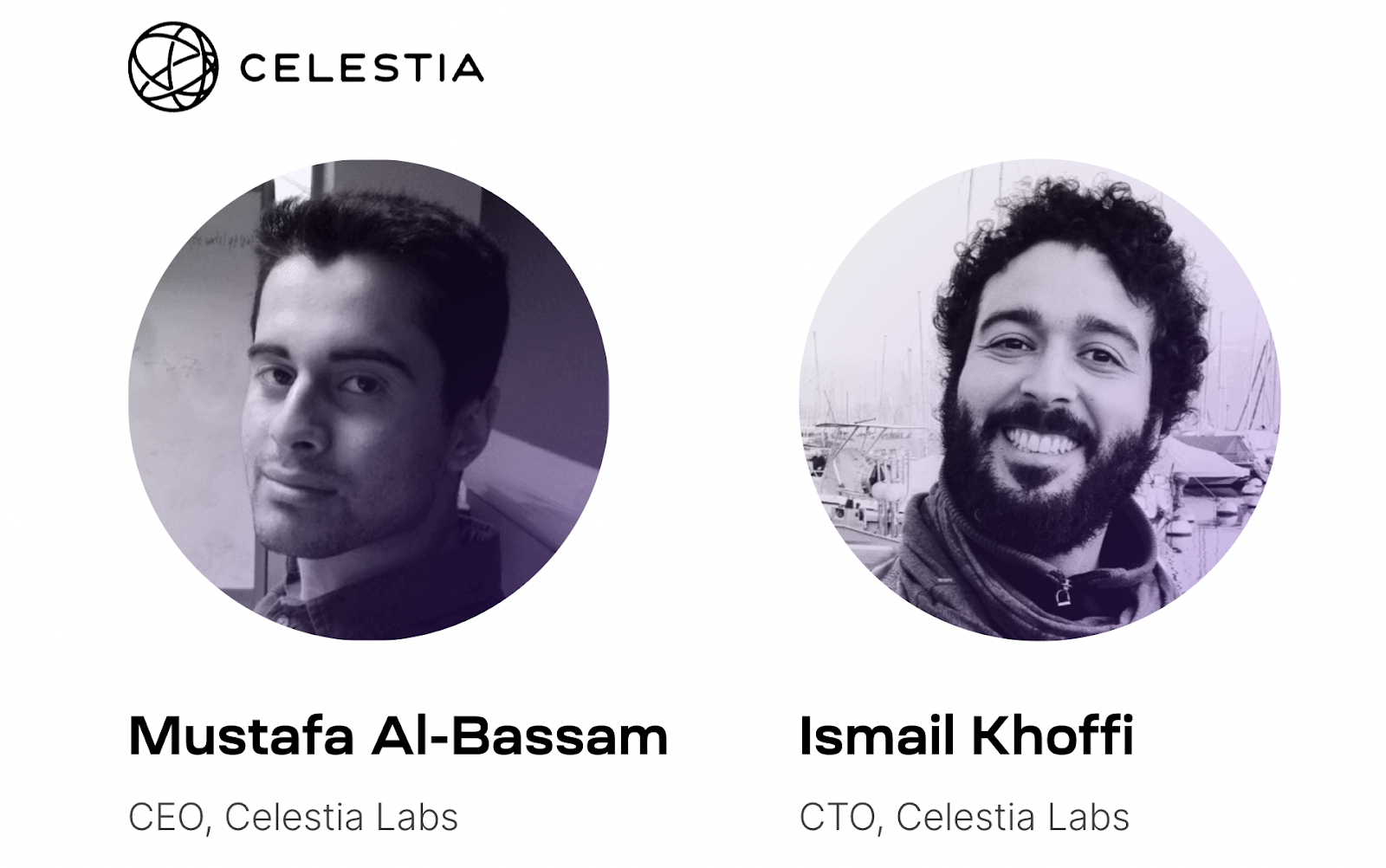
Mustafa Al-Bassam เป็นผู้ร่วมก่อตั้งและ CEO ของ Celestia Labs ก่อนหน้านี้ Mustafa Al-Bassam เคยทำงานมาแล้วในฐานะผู้ร่วมก่อตั้งและนักวิจัยที่ Chainspace (acquired by Facebook) อีกด้วย เขาจบการศึกษาในระดับปริญญาเอกในสาขา Blockchain Scaling จาก University College London (UCL) ส่วน Ismail Khoffi อีกหนึ่งผู้ร่วมก่อตั้งและ CTO ของ Celestia Labs เขาเคยทำงานในโครงการต่าง ๆ มากมายในอุตสาหกรรมการศึกษาระดับอุดมศึกษา ตลอดจนในองค์กรขนาดเล็กถึงขนาดใหญ่ และยังเคยเป็นอดีตวิศวกรอาวุโสที่ Tendermint และ Interchain Foundation อีกด้วย
โทเคน TIA บนเครือข่าย Celestia
Celestia เปิดตัวสกุลเงินดิจิทัลประจำเครือข่ายที่เรียกว่า TIA บน Celestia Mainnet อิงตาม CometBFT และ Cosmos SDK เครือข่าย Celestia ใช้ระบบ Proof-of-Stake เพื่อรักษาฉันทามติของตนเอง เช่นเดียวกับในเครือข่าย Cosmos อื่น ๆ
การกระจายโทเคน TIA
เมื่อวันที่ 31 ตุลาคม 2566 ได้มีการจัดสรรโทเคน TIA จำนวน 60 ล้านโทเคน (คิดเป็น 6% ของอุปทานทั้งหมด) ที่แจกจ่ายให้กับนักพัฒนา นักวิจัย ผู้เดิมพัน และมีการกล่าวถึง Ethereum, Ethereum Rollups, Cosmos และ Osmosis ด้วย TIA มีอุปทานสูงสุดอยู่ที่ 1,000,000,000 TIA และอุปทานหมุนเวียน ณ วันที่ 14 พฤศจิกายน 2566 เท่ากับ 141,043,528 TIA
ข้อมูลจากเว็บไซต์ Techopedia ณ วันที่ 9 พฤศจิกายน 2566 ระบุว่า Celestia ยังไม่ได้ประกาศใด ๆ เกี่ยวกับการแอร์ดรอป TIA ครั้งที่ 2 แต่ได้มีบทความ Clickbait หลายบทความที่เผยแพร่บนอินเทอร์เน็ตที่พูดถึงการแอร์ดรอป เช่น “Celestia airdrop Season 2” และ “TIA airdrop 2” ซึ่งนักลงทุนควระระวังการคลิกลิงก์ประกาศที่ไม่ได้รับการเผยแพร่จากช่องทางทางการด้วย
มูลค่าของ TIA ในปัจจุบัน
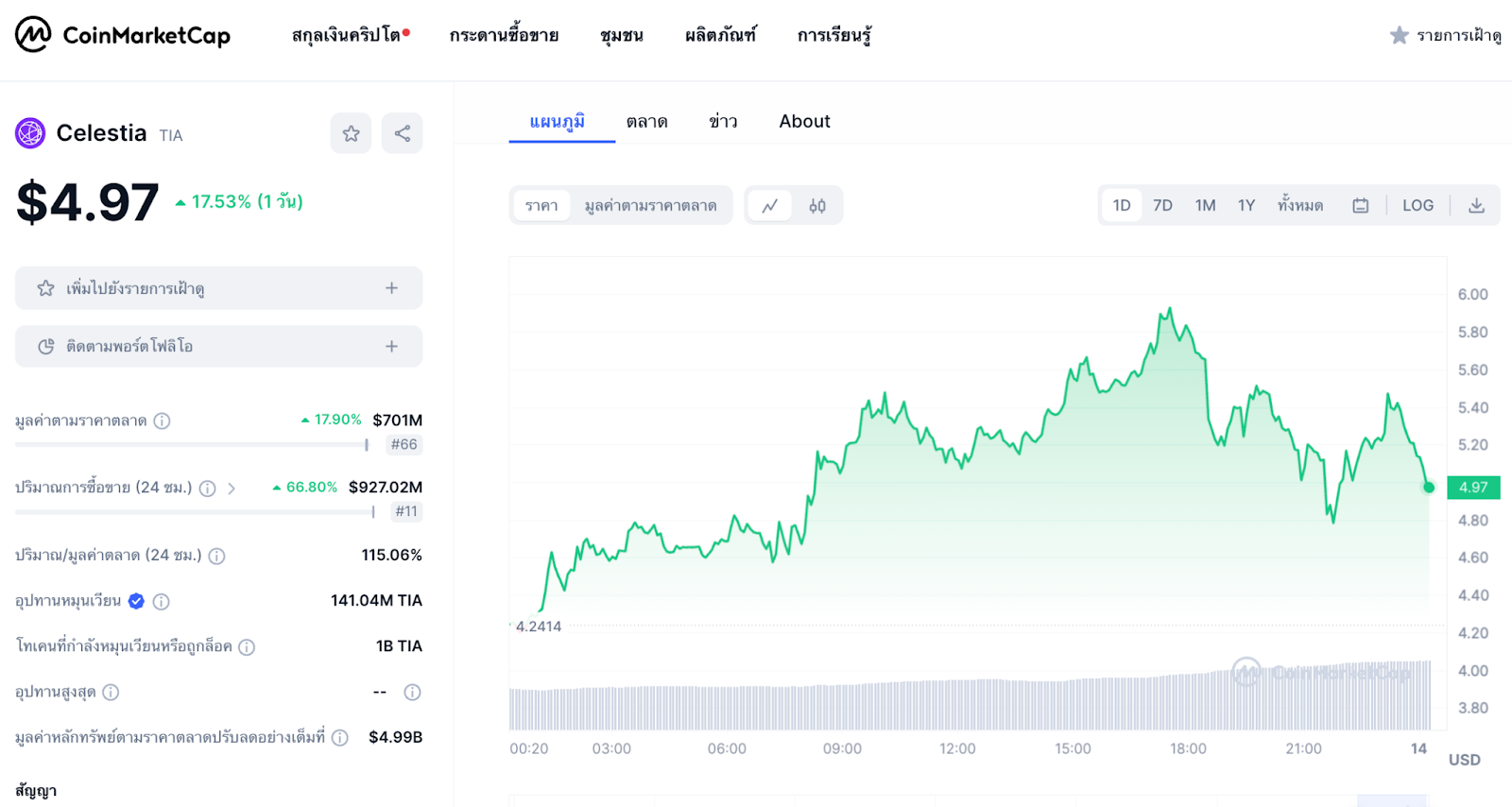
ข้อมูล ณ วันที่ 14 พฤศจิกายน 2566 จากเว็บไซต์ Coinmarketcap มูลค่าของ Celestia(TIA) อยู่ที่คือ 4.99 ดอลลาร์สหรัฐ (หรือประมาณ 179.52 บาท) โดยมีปริมาณการซื้อขายภายใน 24 ชั่วโมงเท่ากับ 927.02 ล้านดอลลาร์สหรัฐ (หรือประมาณ 33,350,471,520 บาท) มีอันดับปัจจุบันบน CoinMarketCap คือ 66 โดยจัดอันดับจากมูลค่าตลาดรวมเท่ากับ 701 ล้านดอลลาร์สหรัฐ (หรือประมาณ 25,214,970,000 บาท)
อ้างอิง: Coinmarketcap, The Block, Celestia | Blockchain, Celestia | Team, Crunchbase, Techopedia, Celestia | Docs
คำเตือน:
- สินทรัพย์ดิจิทัลมีความเสี่ยง โปรดศึกษาและลงทุนให้เหมาะสมกับระดับความเสี่ยงที่ยอมรับได้
- ผลตอบแทนของสินทรัพย์ดิจิทัลในอดีตหรือผลการดําเนินงานในอดีต มิได้เป็นสิ่งยืนยันถึงผลตอบแทน ของสินทรัพย์ดิจิทัลหรือผลการดําเนินงานในอนาคต
________________________________________
Celestia’s TIA Token Emerges as a Solution to the Blockchain Trilemma
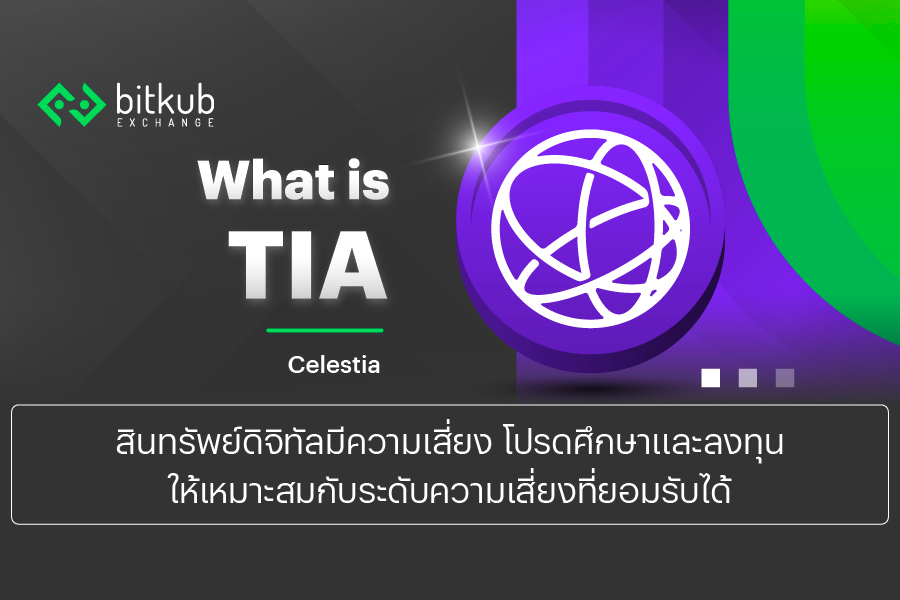
It is well-known in the blockchain industry that the Blockchain Trilemma is a challenge that involves a trade-off among three key aspects, making it difficult for a blockchain network to excel in all three simultaneously. As Vitalik Buterin once stated, there must be a trade-off between three crucial dimensions of blockchain technology: security, scalability, and decentralization. Strengthening one aspect often results in a reduction in the others. This creates a challenging situation for developers who typically sacrifice one dimension to improve the other two. This is the basis for creating Celestia’s segregated blockchain network, which adjusts the architecture of the blockchain to unlock the previous challenges encountered.
What is Celestia?
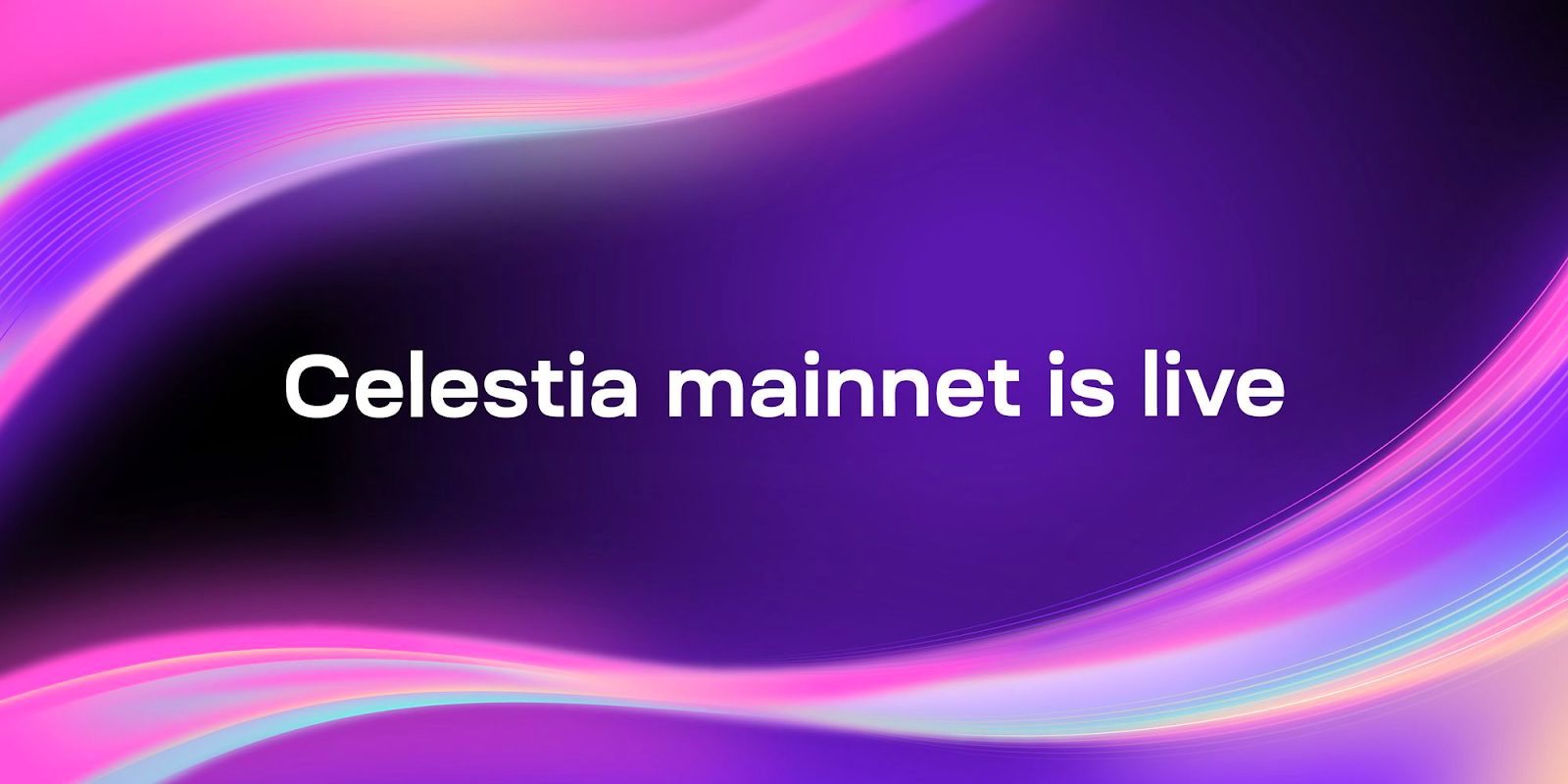
Celestia has been acclaimed as a Modular Blockchain network, ready to use the world’s first operational network data. Launched on the Celestia Mainnet on October 31, 2023, the Celestia project supports the concept of modular blockchain, a design approach that separates fundamental functions in a blockchain, diverging from the traditional integrated blockchain structure.
Introduction to Modular Blockchain
Modular Blockchain is a design concept for blockchains that separates essential functions. This is distinct from early digital currency blockchains like Bitcoin or Ethereum, where all functions are interrelated, including data availability, consensus mechanisms, operations, and various activities. These are referred to as Monolithic blockchains.
It is acknowledged that Monolithic was a significant initial step, demonstrating that developers could create various types of applications using blockchain. However, as more people began to develop and use applications, certain challenges arose, such as:
-Limited Space: Inability to create what is needed due to the necessity of sharing space with others, restricting the capabilities of the app.
-High Costs: Applications become costly to use due to exorbitant fees, making them unaffordable.
-Accessibility Issues: Limited open access for everyone, as increased functionality results in fewer individuals able to verify network operations.
Additionally, various other problems have constrained the usability of Monolithic blockchains. Consequently, in recent years, a new approach to blockchain development has emerged, known as Modular Blockchain. This blockchain type separates working parts, offering a counterpoint to the integrated nature of Monolithic blockchains.
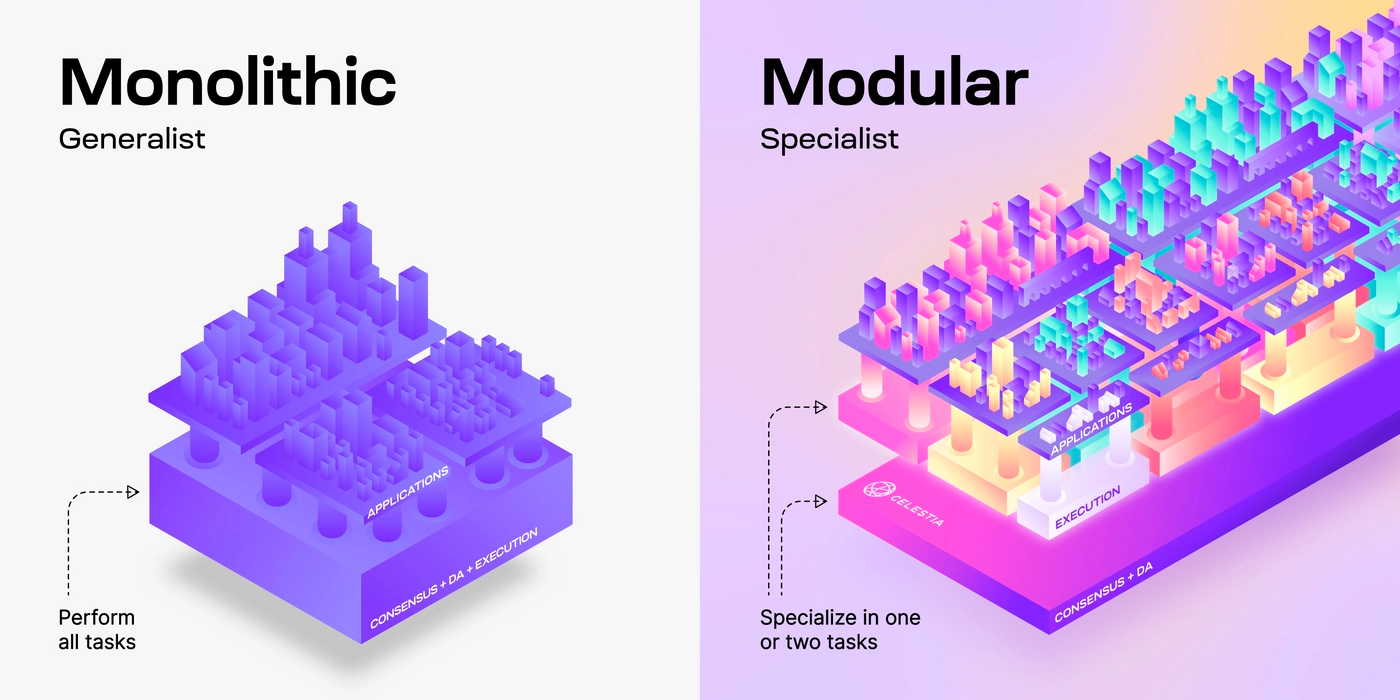
If you think about individual components that you can mix and match to create structures tailored to your needs, you can similarly mix and match modular blockchain blocks to create diverse modular stacks.
Modular blockchain significantly reduces Celestia’s limitations regarding how applications and modular blockchains are built. The expansive design space encompasses everything from cutting-edge hardware to unique privacy models and the architecture of a new type of blockchain. This caters to developers who can create anything they desire based on their needs.
Celestia Founders
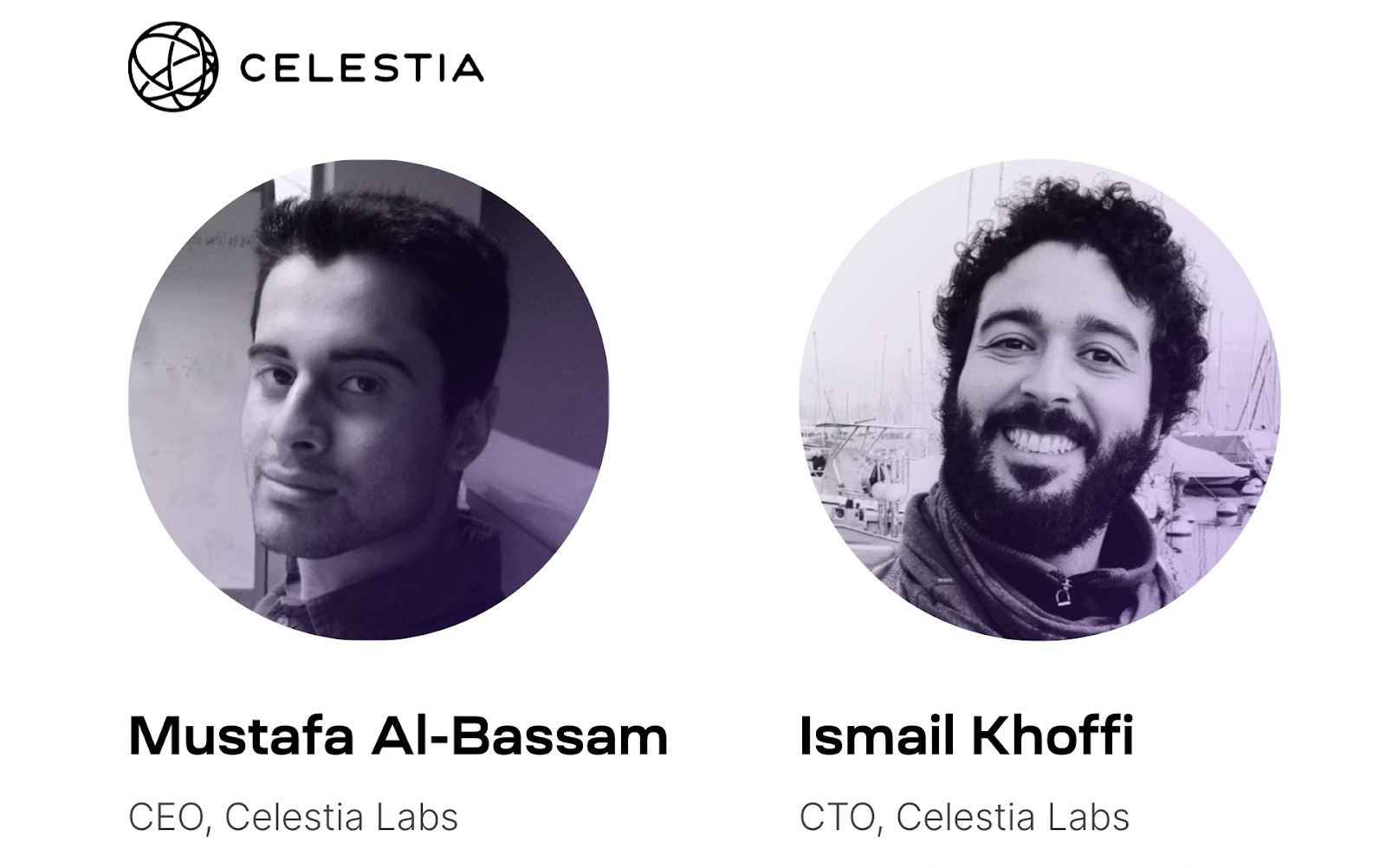
Mustafa Al-Bassam is the co-founder and CEO of Celestia Labs. Prior to this role, he served as a co-founder and researcher at Chainspace, which was later acquired by Facebook. He holds a doctoral degree in Blockchain Scaling from University College London (UCL).
Ismail Khoffi is another co-founder and the Chief Technology Officer (CTO) of Celestia Labs. With a diverse background, he has worked on various projects in the education and technology industry, ranging from small to large organizations. Ismail Khoffi also has experience as a former engineer at Tendermint and Interchain Foundation.
TIA Token Distribution
On October 31, 2023, a distribution of 60 million TIA tokens (equivalent to 6% of the total supply) took place. These tokens were allocated to developers, researchers, and early backers, and discussions were made regarding Ethereum, Ethereum Rollups, Cosmos, and Osmosis. The maximum supply of TIA is set at 1,000,000,000 TIA, with a circulating supply of 141,043,528 TIA as of November 14, 2023.
As of November 9, 2023, information from Techopedia indicates that Celestia has not announced any details regarding the second TIA airdrop. However, caution is advised for investors, as several clickbait articles circulating on the internet mention “Celestia Airdrop Season 2” and “TIA Airdrop 2.” Investors should be wary of clicking on links from unofficial sources.
Current Value of TIA
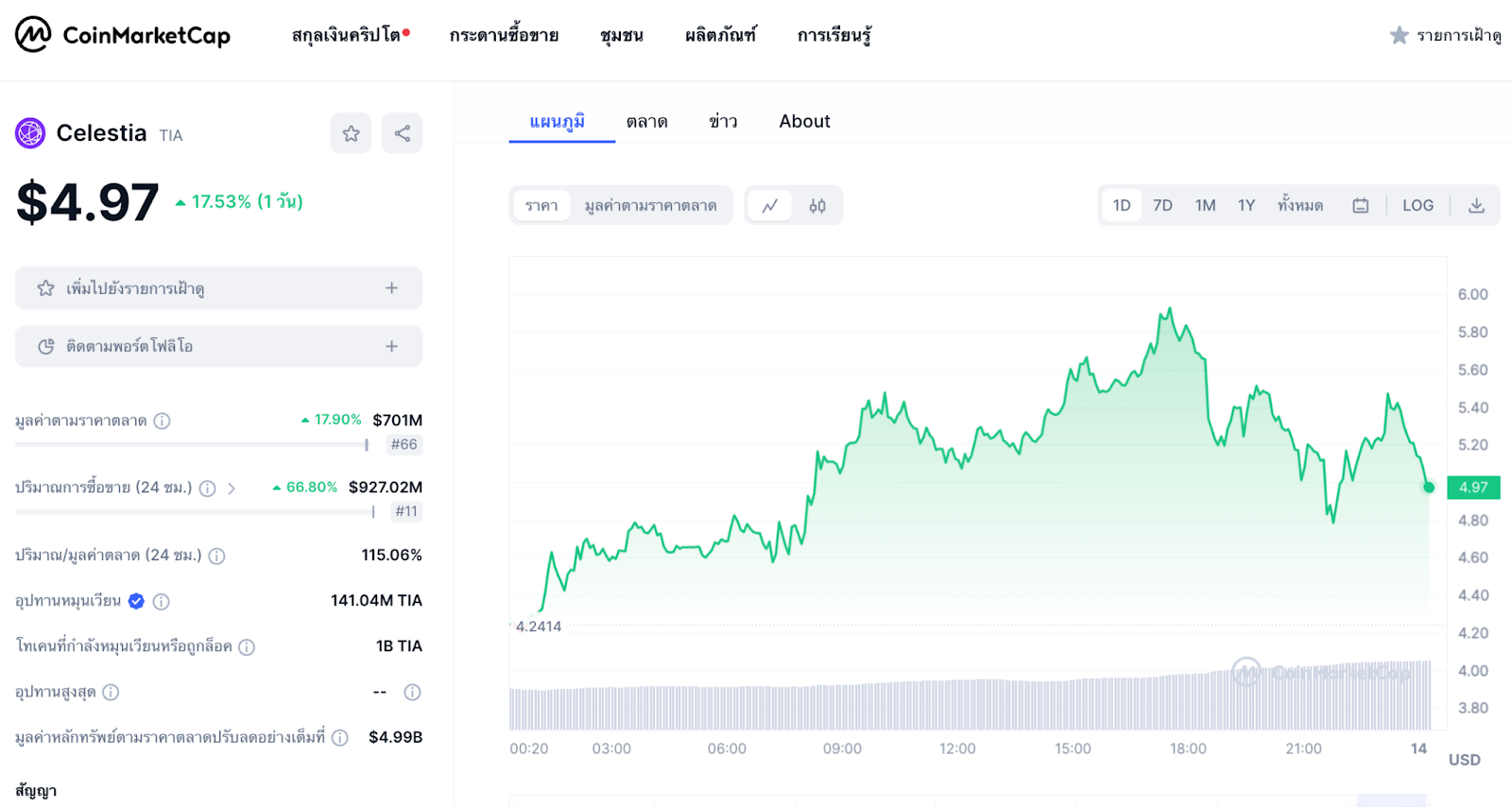
As of November 14, 2023, according to Coinmarketcap, the value of Celestia (TIA) is $4.99 USD (approximately 179.52 Thai Baht). The 24-hour trading volume is reported to be $927.02 million USD (approximately 33,350,471,520 Thai Baht). Celestia holds the current rank of 66 on CoinMarketCap, determined by its market capitalization of $701 million USD (approximately 25,214,970,000 Thai Baht).
Reference: Coinmarketcap, The Block, Celestia | Blockchain, Celestia | Team, Crunchbase, Techopedia, Celestia | Docs
Disclaimers:
- Digital assets involve risks; investors should study information carefully and make investments according to their own risk profile.
- Returns/Past Performance does not guarantee future returns/performance.
____________________________________
ที่มา:
Medium